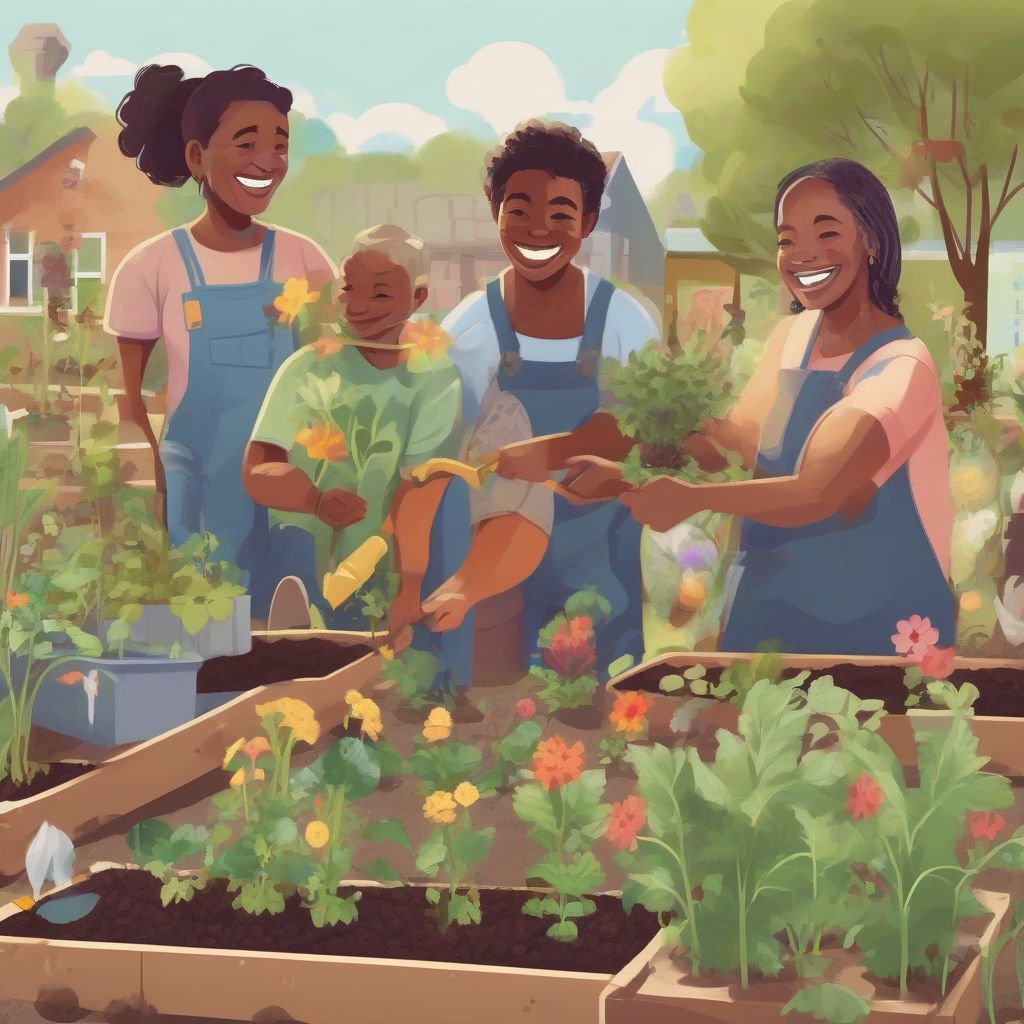Imagine a sunny afternoon, strolling through a vibrant community garden bursting with colorful flowers, fresh herbs, and plump vegetables. This idyllic scene isn’t just a dream; it can become a reality when neighbors come together to create a shared green space. Collaborating on a community garden not only provides fresh, healthy food but also fosters a sense of belonging, promotes sustainability, and beautifies the neighborhood. Ready to dig in and learn how to sprout your own community garden? Let’s get started!
Sowing the Seeds: Laying the Groundwork for Success
Like any successful project, a community garden requires careful planning and open communication. Here’s how to lay a strong foundation:
1. Gather Your Green Team:
Reach out to neighbors who share your passion for gardening. Host a casual gathering, distribute flyers, or leverage the power of social media to gauge interest and recruit like-minded individuals.
2. Define Your Vision:
Discuss the purpose of your community garden. Do you envision a space primarily for growing food, or will it also serve as a gathering place for social events? Defining your goals will guide your decisions moving forward.
3. Location, Location, Location:
Scout potential garden sites together. Ideal locations have ample sunlight, access to water, and are easily accessible to the community. Consider factors like proximity to parking, public transportation, and existing infrastructure.
 Community Garden Planning Meeting
Community Garden Planning Meeting
4. Cultivate Collaboration:
Establish clear communication channels from the outset. Create a dedicated email list, social media group, or messaging app to facilitate information sharing, decision-making, and event coordination.
Nurturing Growth: From Planning to Planting
Once you’ve established a solid foundation, it’s time to turn your vision into reality:
1. Design with Purpose:
Work together to design a garden layout that maximizes space and functionality. Consider raised beds for better accessibility, designated areas for different types of plants (vegetables, herbs, flowers), and pathways for easy navigation.
2. Share the Responsibility (and the Harvest):
Decide on a plot allocation system that feels fair and equitable to all participants. Will you assign individual plots, or opt for a shared gardening approach? Establish clear guidelines for garden maintenance, watering schedules, and harvesting protocols.
3. Seek Expert Guidance:
Consult with local gardening experts, horticultural societies, or cooperative extension offices for advice on soil testing, plant selection suitable for your climate, and sustainable gardening practices.
4. Fund Your Flourishing Garden:
Determine the financial needs for your community garden, including tools, seeds, soil amendments, and any infrastructure improvements. Explore funding options like membership fees, fundraising events, grants, or sponsorships from local businesses.
Reaping the Rewards: Building a Thriving Community Garden
With a little care and collaborative spirit, your community garden will blossom into a vibrant hub of activity:
1. Celebrate Successes:
Organize regular potlucks, workshops, or volunteer appreciation events to foster a sense of community and celebrate your shared accomplishments.
2. Embrace Sustainable Practices:
Implement eco-friendly gardening methods like composting, rainwater harvesting, and companion planting to minimize your environmental impact.
3. Share the Bounty:
Consider donating a portion of your harvest to local food banks or shelters to spread the joy of fresh produce and give back to the community.
 Diverse Community Members Gardening Together
Diverse Community Members Gardening Together
Conclusion: Cultivating More Than Just Plants
Creating a community garden is more than just digging in the dirt; it’s about cultivating connections, fostering a sense of belonging, and reaping the rewards of shared effort. By following these tips, you can transform a vacant lot into a vibrant community hub that nourishes both body and soul. So gather your neighbors, grab your gardening gloves, and let’s get growing!
[amazon bestseller=”community gardening”]
